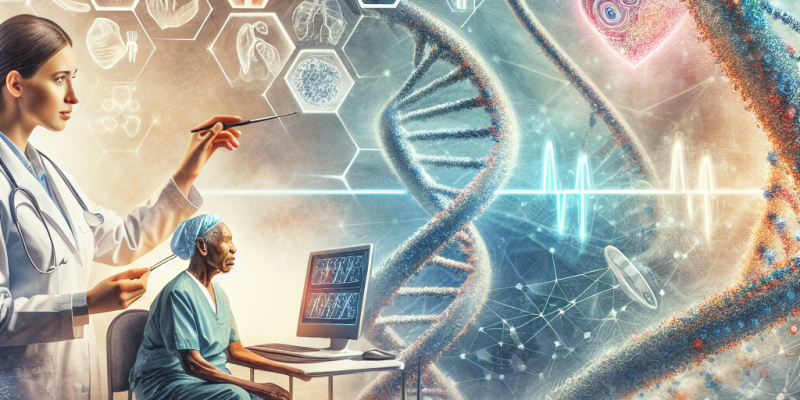Empowering Healthcare: How Machine Learning Innovations Are Saving Lives

The healthcare landscape is rapidly evolving, driven by advancements in technology. Among the most transformative developments in recent years has been the integration of machine learning (ML) into various aspects of healthcare. This powerful subset of artificial intelligence is enabling healthcare providers to make more accurate diagnoses, personalize treatment plans, enhance patient care, and ultimately save lives. This article delves into the innovations of machine learning in healthcare and explores their profound implications for improving patient outcomes.
1. Enhanced Diagnostic Accuracy
One of the most significant contributions of machine learning in healthcare is its capacity to improve diagnostic accuracy. Traditional diagnostic methods often rely on human expertise, which can be limited by individual experience and biases. Machine learning algorithms, however, can process vast amounts of health data, recognize patterns, and provide insights far beyond human capabilities.
For example, researchers have developed ML models that analyze medical imaging data like X-rays, MRIs, and CT scans with remarkable precision. A study published in Nature demonstrated that an AI model outperformed radiologists in identifying breast cancer in mammograms. By flagging potential issues early in the diagnostic process, these technologies can lead to earlier interventions, significantly improving survival rates.
2. Personalized Medicine
Machine learning is also revolutionizing personalized medicine, wherein treatments and interventions are tailored to individual patients based on their unique health profiles. By analyzing genetic information, lifestyle factors, and treatment responses, ML algorithms can help healthcare providers predict which therapies will be most effective for specific patients.
Pharmaceutical companies are leveraging machine learning to streamline drug discovery, identifying potential new treatments more efficiently. For instance, ML algorithms can analyze existing literature and clinical trial data to find correlations between drug compounds and patient responses, reducing the time and cost associated with bringing new medications to market.
3. Predictive Analytics for Early Intervention
The ability of machine learning to predict health outcomes is transforming preventative care. Predictive analytics can analyze trends and historical data to identify patients at high risk for certain conditions, such as diabetes, heart disease, or sepsis.
For example, ML models can process electronic health records (EHRs) to assess patients’ risk factors and flag individuals who may require proactive management. By providing interventions before clinical deterioration occurs, healthcare providers can mitigate complications, reduce hospital readmission rates, and ultimately save lives.
4. Streamlined Administrative Processes
Machine learning is not only enhancing clinical care but also streamlining administrative processes within healthcare systems. The administrative burden often distracts healthcare professionals from patient care. By automating routine tasks such as appointment scheduling, insurance verification, and claims processing, machine learning can free up time for healthcare providers to focus more on their patients.
Natural language processing (NLP), a branch of machine learning, is particularly useful in analyzing physician notes and patient records. By extracting relevant data and identifying key trends, NLP can optimize clinical workflows, enhance communication among healthcare teams, and improve overall operational efficiency.
5. Telemedicine and Remote Monitoring
The COVID-19 pandemic accelerated the adoption of telemedicine, and machine learning plays a crucial role in enhancing these services. ML algorithms can analyze data collected from wearable devices, such as heart monitors and fitness trackers, enabling continuous health monitoring and timely interventions.
Furthermore, machine learning can enhance the virtual consultation experience by providing providers with immediate access to patient data and predictive insights based on remote assessments. This immediate availability of actionable information aids in making effective clinical decisions, ensuring patients receive appropriate care without unnecessary delays.
Conclusion
As machine learning continues to advance, its applications in healthcare will undoubtedly expand, leading to even greater improvements in patient care and outcomes. From improving diagnostic accuracy and personalizing treatment to enabling preventive care and optimizing administrative tasks, the innovations driven by machine learning are saving lives today and shaping the future of medicine.
However, the integration of machine learning into healthcare must be undertaken with caution, ensuring patient privacy and ethical considerations are upheld. With the right governance and best practices in place, the potential for machine learning to empower healthcare and save lives is immense. As stakeholders across the healthcare ecosystem embrace these technologies, we stand on the brink of a new era that promises a healthier, more efficient future for patients worldwide.














